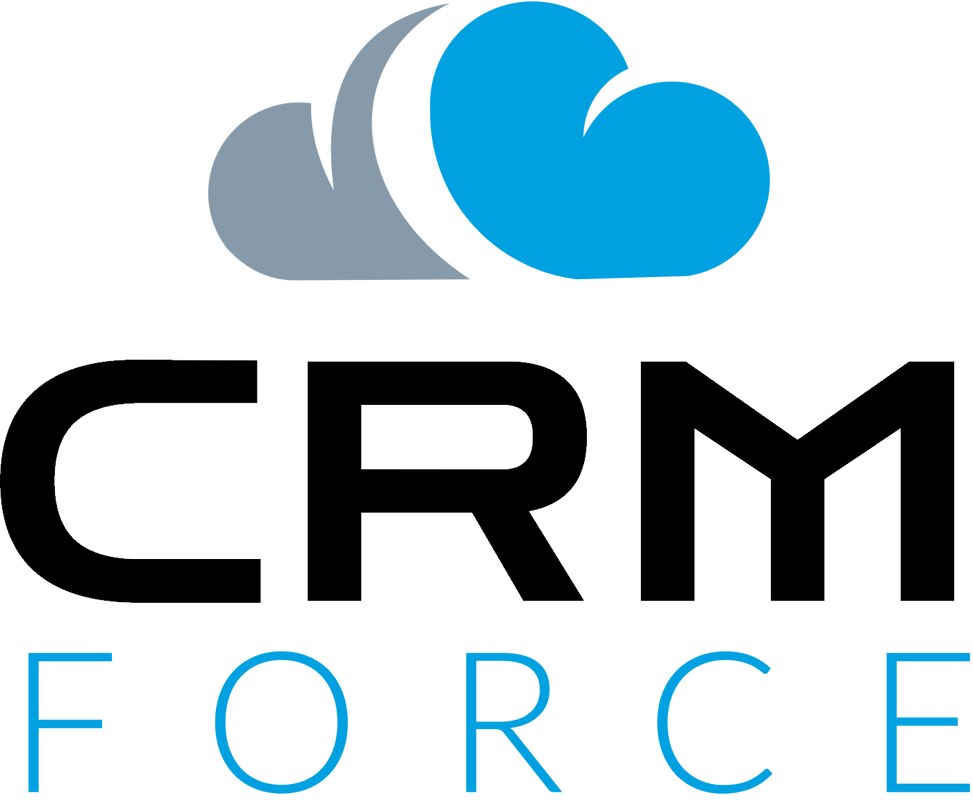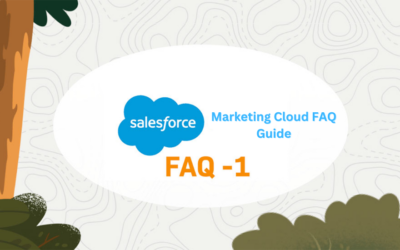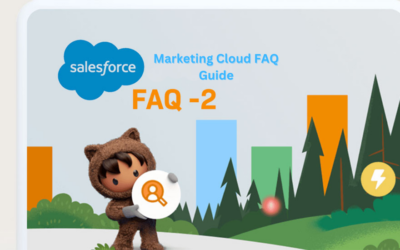In the ever-evolving landscape of marketing automation, Marketing Cloud Account Executives are tasked with making strategic decisions that have a profound impact on their organizations’ success. This is where the choice between HubSpot Marketing Hub and Salesforce Pardot Marketing Cloud comes into play, with each platform offering a unique set of features and capabilities to streamline marketing efforts and drive revenue. In this comprehensive comparison, we embark on a journey to explore these two industry giants, shedding light on the nuances that matter most to Account Executives. Whether you’re a seasoned marketer or just beginning your foray into the world of marketing automation, understanding the key differentiators between HubSpot Marketing Hub and Salesforce Pardot Marketing Cloud is crucial in making an informed choice.
HubSpot Marketing Hub, with its mission to empower businesses to attract, engage, and delight customers, boasts a reputation for its user-friendliness and comprehensive suite of inbound marketing tools. It offers an intuitive interface that caters to users of various backgrounds, making it an attractive option for Marketing Cloud Account Executives seeking a quick and seamless onboarding experience. On the other hand, Salesforce Pardot Marketing Cloud, as part of the Salesforce ecosystem, brings a wealth of integration capabilities and is particularly well-suited for B2B organizations. While its interface may have a steeper learning curve, it shines in the realm of lead generation and nurturing, making it a powerful choice for enterprises with complex sales cycles. As we delve deeper into this comparison, we will examine user-friendliness, integration capabilities, pricing, scalability, inbound marketing features, marketing automation, sales enablement, and email marketing in both platforms, providing the insights necessary for Account Executives to make a decision that aligns with their unique needs and organizational goals. If you need assistance with Salesforce CRM setup and optimization, companies like CRM Force can provide valuable expertise and support.
1- Understanding HubSpot Marketing Hub
1.1. HubSpot Marketing Hub Overview
HubSpot’s Mission and Key Features: HubSpot’s mission is to help businesses attract, engage, and delight customers. Key features include content management, social media management, email marketing, lead generation, analytics, and CRM integration. HubSpot aims to provide an all-in-one solution for marketing and sales teams.
History and Reputation: Founded in 2006, HubSpot has gained recognition for its pioneering approach to inbound marketing. It has established itself as a leader in the industry, known for its user-friendly platform and extensive educational resources, such as the HubSpot Academy.
Pricing Models and Tiers: HubSpot offers multiple pricing tiers, making it accessible to startups and scalable for larger enterprises. Pricing is based on the number of contacts and specific features needed. The availability of free tools, like CRM, is an attractive feature for many businesses.
Integration Capabilities: HubSpot provides seamless integration with its native CRM, which is a powerful feature for account executives. Additionally, it supports various third-party integrations, allowing businesses to connect their marketing stack with other essential tools.
1.2. Inbound Marketing with HubSpot
The Concept of Inbound Marketing: Inbound marketing is a customer-centric approach that focuses on creating valuable content to attract and engage prospects. Instead of interrupting potential customers with intrusive ads, inbound marketing aims to provide helpful information and solutions.
How HubSpot Facilitates Inbound Marketing: HubSpot equips account executives with tools for content creation, optimization, and distribution. Its content management system allows for the easy creation of blogs, landing pages, and web content. Moreover, it offers SEO tools and social media integration to enhance content discoverability and distribution.
Content Creation and Optimization: HubSpot provides user-friendly content creation tools, complete with keyword research and on-page SEO recommendations. This empowers account executives to optimize their content for search engines and users, ultimately improving organic search rankings.
Lead Nurturing and Segmentation: HubSpot’s workflow automation enables account executives to create intricate lead nurturing sequences. They can segment their leads based on various criteria and deliver personalized content and communication, ultimately increasing the likelihood of lead conversion.
Comparison: HubSpot is often favored for its ease of use and quick onboarding, making it an excellent choice for Marketing Cloud Account Executives who need a platform that they can start using immediately. In contrast, Pardot’s learning curve may require a bit more time to master, but it offers extensive capabilities.
1.3. Sales Enablement Tools in HubSpot
HubSpot’s CRM Integration: HubSpot offers its native CRM, which seamlessly integrates with the marketing platform. This integration ensures a unified view of customer interactions and activities, allowing both sales and marketing teams to work cohesively.
Lead Scoring and Tracking: HubSpot’s lead scoring system assigns values to leads based on their interactions with the brand. This aids sales teams in prioritizing leads based on their likelihood to convert. Furthermore, tracking tools help sales teams understand where leads are in the buyer’s journey.
Sales Automation and Pipeline Management: HubSpot’s CRM includes features for managing sales pipelines, tracking deals, and automating routine tasks. Sales teams can set up automation for tasks like email follow-ups, enhancing efficiency.
Analytics and Reporting: HubSpot provides account executives with powerful analytics and reporting tools. They can gain insights into lead and customer behavior, campaign performance, and the overall effectiveness of marketing and sales efforts. This data-driven approach helps teams refine their strategies.
1.4. HubSpot’s Email Marketing Capabilities
Creating and Sending Emails: HubSpot’s email marketing tools enable account executives to design and send visually appealing emails. Users can choose from various templates or create custom emails. The intuitive interface simplifies the email creation process.
Personalization and A/B Testing: Personalization is a key feature in HubSpot. Account executives can personalize email content and subject lines, improving engagement. A/B testing capabilities help optimize email campaigns by testing different elements and identifying what resonates with the audience.
Email Automation Workflows: HubSpot’s marketing automation extends to email marketing. Account executives can create automated workflows triggered by user actions. For example, emails can be sent in response to specific lead behaviors, such as downloading a whitepaper or viewing a pricing page.
Deliverability and Analytics: HubSpot places a strong emphasis on email deliverability. It monitors sender’s reputation, ensures compliance with email marketing best practices, and provides insights into deliverability rates. Analytics tools offer comprehensive data on email opens, clicks, and conversions, allowing account executives to gauge the impact of their email campaigns.
2- Exploring Salesforce Pardot Marketing Cloud
2.1. Salesforce Pardot Marketing Cloud Overview
Introduction to Salesforce Pardot: Salesforce Pardot is a B2B marketing automation platform within the Salesforce ecosystem. It specializes in lead generation, lead nurturing, and analytics, making it a popular choice for B2B businesses.
Reputation and Use Cases: Pardot is well-regarded for its B2B marketing capabilities. It is commonly used by sales and marketing teams in B2B organizations that are already using Salesforce CRM, as it seamlessly integrates with Salesforce.
Pricing Structure and Plans: Pardot offers pricing plans that cater to businesses of varying sizes. Pricing is typically based on the number of users and the specific features required. It is important for account executives to choose a plan that aligns with their organization’s needs and growth goals.
Integration with Salesforce CRM: One of Pardot’s standout features is its tight integration with Salesforce CRM. This integration ensures a unified view of leads and prospects, which is crucial for sales and marketing alignment in B2B organizations.
2.2. Marketing Automation with Pardot
Understanding Marketing Automation: Marketing automation with Pardot involves setting up automated processes and workflows to engage and nurture leads throughout the sales funnel. It is particularly effective for B2B organizations with complex sales cycles.
Pardot’s Automation Features: Pardot offers a range of automation features, including lead scoring, lead nurturing, and behavior-triggered actions. Account executives can set up drip campaigns, automate lead assignments, and create customized nurturing tracks.
Lead Generation and Management: Pardot provides tools for lead capture and management, including customizable forms and landing pages. Leads are automatically added to the CRM, ensuring that sales teams have immediate access to potential customers.
Drip Campaigns and Marketing Assets: Account executives can create and manage drip email campaigns, which are essential for nurturing leads over an extended period. Pardot also supports the creation of marketing assets like whitepapers and webinars, which are crucial for B2B lead generation.
2.3. Sales and Marketing Alignment
Integration with Salesforce CRM: The integration of Pardot with Salesforce CRM is a substantial advantage. It ensures that both sales and marketing teams have a consistent and up-to-date view of leads, opportunities, and customer interactions.
Lead Scoring and Nurturing: Pardot’s lead scoring system helps sales teams prioritize leads based on their interactions and engagement with marketing campaigns. Lead nurturing campaigns can be tailored to specific segments, ensuring that leads are receiving relevant content at the right time.
Sales Alerts and Engagement History: Pardot provides sales teams with alerts and notifications when leads exhibit buying signals. Additionally, the engagement history feature offers a comprehensive view of lead behavior, helping account executives tailor their sales approach.
Analytics and Reporting: Pardot’s analytics tools offer deep insights into campaign performance, lead behavior, and ROI. Account executives can track how different campaigns and strategies impact the sales pipeline, making data-driven decisions to refine their approach.
2.4. Email Marketing in Pardot
Creating and Sending Emails: Pardot’s email builder empowers account executives to create visually appealing emails with customizable templates. The tool supports responsive design, ensuring that emails appear correctly on a variety of devices.
Personalization and Dynamic Content: Personalization is a hallmark of Pardot’s email marketing capabilities. Account executives can insert dynamic content into emails, tailoring messages to specific segments or even individual leads. This level of personalization can significantly improve email engagement.
Email Tracking and Analytics: Pardot tracks email engagement metrics such as opens, clicks, and conversions. This information is invaluable for account executives, as it allows them to understand the effectiveness of their email campaigns and make data-driven optimizations.
Compliance and Deliverability: Pardot places a strong emphasis on email compliance. This includes features for ensuring that emails adhere to best practices and legal requirements. By following these guidelines, businesses can maintain high email deliverability rates, ensuring that their messages reach the intended recipients.
3- Comparing HubSpot Marketing Hub and Salesforce Pardot
3.1. User-Friendliness
HubSpot’s Intuitive Interface: HubSpot is known for its user-friendly interface, making it accessible to users of varying technical backgrounds. The dashboard provides a clear and intuitive navigation system, allowing account executives to quickly find the tools they need.
Pardot’s Learning Curve and Interface: While Pardot offers powerful features, some users may find that it has a steeper learning curve compared to HubSpot. The interface, while comprehensive, may require more time for users to become proficient.
3.2. Integration Capabilities
HubSpot’s Native CRM vs. Pardot’s Salesforce Integration: HubSpot’s native CRM is an all-in-one solution that streamlines the user experience. On the other hand, Pardot’s tight integration with Salesforce CRM is a major advantage for organizations already using Salesforce.
Third-Party Integrations and Customizability: Both platforms offer integration capabilities with third-party tools. HubSpot has a reputation for its extensive marketplace of integrations, allowing account executives to connect their marketing stack with various tools. Pardot, being part of the Salesforce ecosystem, provides opportunities for customizability and integration with other Salesforce apps and services.
3.3. Pricing and Scalability
Comparative Pricing Structures: Pricing structures for both platforms are flexible and can accommodate businesses of different sizes. Account executives should carefully evaluate the costs associated with the features they need, taking into consideration the number of contacts or users.
Scalability Options for Growing Businesses: Both HubSpot and Pardot offer scalability. HubSpot’s approach may be more accessible for smaller businesses, especially with its free CRM option. Pardot, on the other hand, is often favored by larger enterprises, particularly if they are already part of the Salesforce ecosystem. Account executives should assess their growth goals when selecting a platform.
Comparison: HubSpot is often seen as more accessible, especially for smaller businesses or startups, thanks to its free CRM and diverse pricing tiers. Pardot, while accommodating various business sizes, may be more attractive to larger enterprises looking for a robust marketing automation solution.
3.4. Inbound Marketing Features
Content Creation and Optimization: Both platforms offer content creation and optimization tools. HubSpot stands out for its strong emphasis on inbound marketing, offering an array of features for creating and optimizing content, including blogging and SEO tools.
SEO Tools and Blogging Capabilities: HubSpot provides robust SEO tools and an intuitive blogging platform that enables account executives to create, optimize, and publish blog posts efficiently. These features are well-suited for content-driven inbound marketing strategies.
Comparison: If your organization focuses on inbound marketing and content-driven strategies, HubSpot is the clear choice. However, for B2B organizations with complex lead nurturing needs, Pardot’s lead scoring and automation features are highly advantageous.
3.5. Marketing Automation
HubSpot’s Automation Capabilities: HubSpot offers extensive marketing automation features with a visual workflow editor, simplifying the creation of automation sequences. The user-friendly interface is advantageous for those who want to build complex automation workflows.
Pardot’s Automation and Engagement Tools: Pardot is known for its robust automation capabilities, especially in the B2B marketing space. It excels in lead nurturing, and behavior-triggered automation. Account executives can set up intricate lead nurturing tracks and personalized engagement strategies.
Comparison: For straightforward marketing automation with ease of use, HubSpot is an excellent choice. Pardot is ideal for B2B organizations with intricate lead nurturing requirements and a need for behavior-triggered automation.
3.6. Sales Enablement
CRM Integration and Sales Tools in HubSpot: HubSpot provides a seamless CRM integration and an array of sales enablement tools that are highly beneficial for account executives. This includes pipeline management, lead tracking, and automation of sales-related tasks, such as email follow-ups.
Pardot’s Alignment with Salesforce CRM: Pardot’s alignment with Salesforce CRM ensures data consistency and offers specialized tools for B2B sales teams. Account executives can take advantage of Salesforce’s robust CRM capabilities in conjunction with Pardot’s marketing automation.
Comparison: The choice here depends on whether your organization is already using Salesforce CRM. Pardot offers a unified experience for organizations in the Salesforce ecosystem. HubSpot’s CRM integration is user-friendly and may be preferred for organizations looking for an all-in-one solution.
3.7. Email Marketing
Email Creation and Personalization in HubSpot: HubSpot offers user-friendly email creation and personalization tools. Account executives can create visually appealing emails, personalize content, and utilize A/B testing to optimize email campaigns for maximum engagement.
Pardot’s Email Marketing Features: Pardot’s email marketing capabilities are comprehensive and particularly well-suited for B2B email campaigns. The platform allows for personalized emails, dynamic content, and in-depth tracking and analytics to assess the performance of email campaigns.
Comparison: HubSpot is known for its ease of use in email marketing and offers a user-friendly experience. Pardot, while offering similar features, may be a preferred choice for B2B organizations with more complex email marketing needs.
Conclusion
In conclusion, In the realm of marketing automation, choosing the right platform can be a pivotal decision for Marketing Cloud Account Executives. As we’ve traversed the landscape of HubSpot Marketing Hub and Salesforce Pardot Marketing Cloud, it’s evident that both platforms offer a rich array of features, each with its own unique strengths. The ultimate choice hinges on the specific needs, goals, and circumstances of your organization.
HubSpot Marketing Hub, celebrated for its user-friendliness, offers an accessible entry point for businesses of all sizes. Its focus on inbound marketing, content creation, and engagement makes it an ideal choice for organizations looking to enhance their online presence and build strong customer relationships. HubSpot’s intuitive interface and a wide range of integration options add to its appeal, especially for Marketing Cloud Account Executives who value ease of use and versatility.
On the other hand, Salesforce Pardot Marketing Cloud shines as a robust marketing automation solution within the Salesforce ecosystem. It excels in complex lead nurturing and B2B marketing scenarios. Pardot’s close integration with Salesforce CRM ensures a seamless flow of data between sales and marketing teams, making it the platform of choice for organizations heavily invested in Salesforce’s suite of products.
As we conclude this exploration of HubSpot Marketing Hub vs. Salesforce Pardot, it’s evident that each platform caters to distinct needs and preferences. HubSpot leans towards user-friendliness and content-driven marketing, while Pardot is a powerful choice for B2B organizations with intricate lead nurturing requirements. The decision you make should be an alignment with your organization’s current infrastructure, growth goals, and the specific marketing and sales strategies you intend to employ. By carefully evaluating these factors, you can ensure that your choice will empower your Marketing Cloud team to thrive in the dynamic world of digital marketing. To learn more about how CRM Force can assist you in recruiting top CRM talent and optimizing your CRM strategies for successful drip campaigns, contact us today. Together, let’s maximize your customer engagement Contact Us today.





